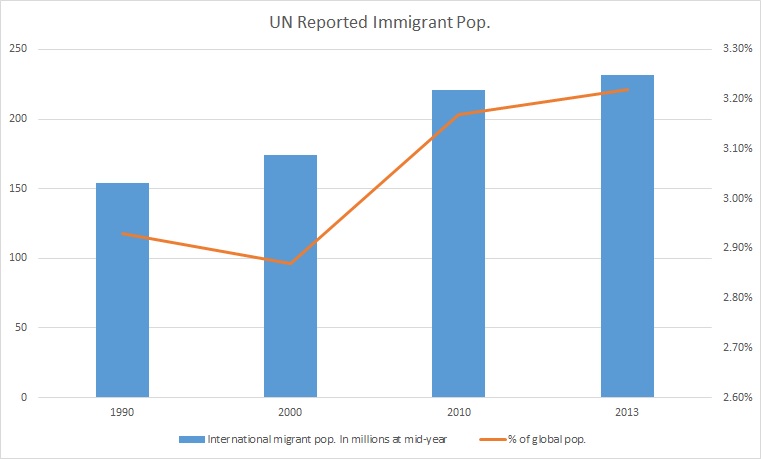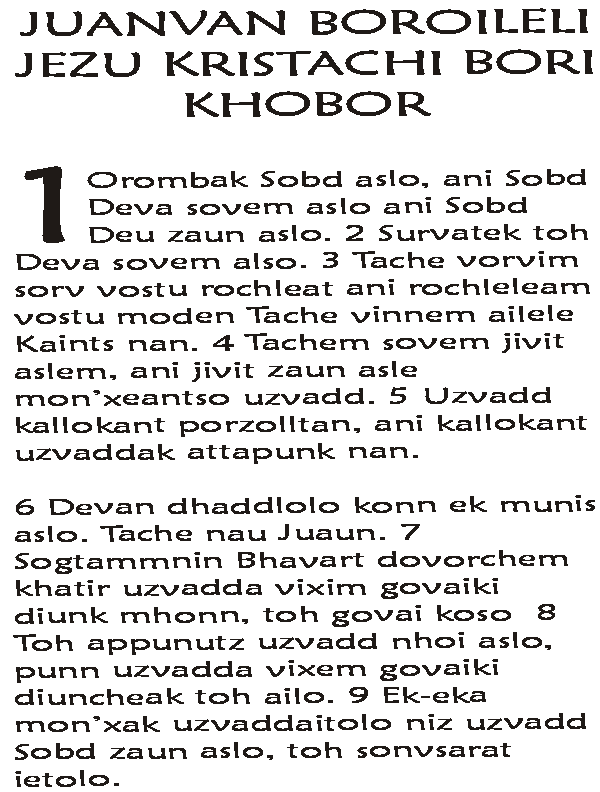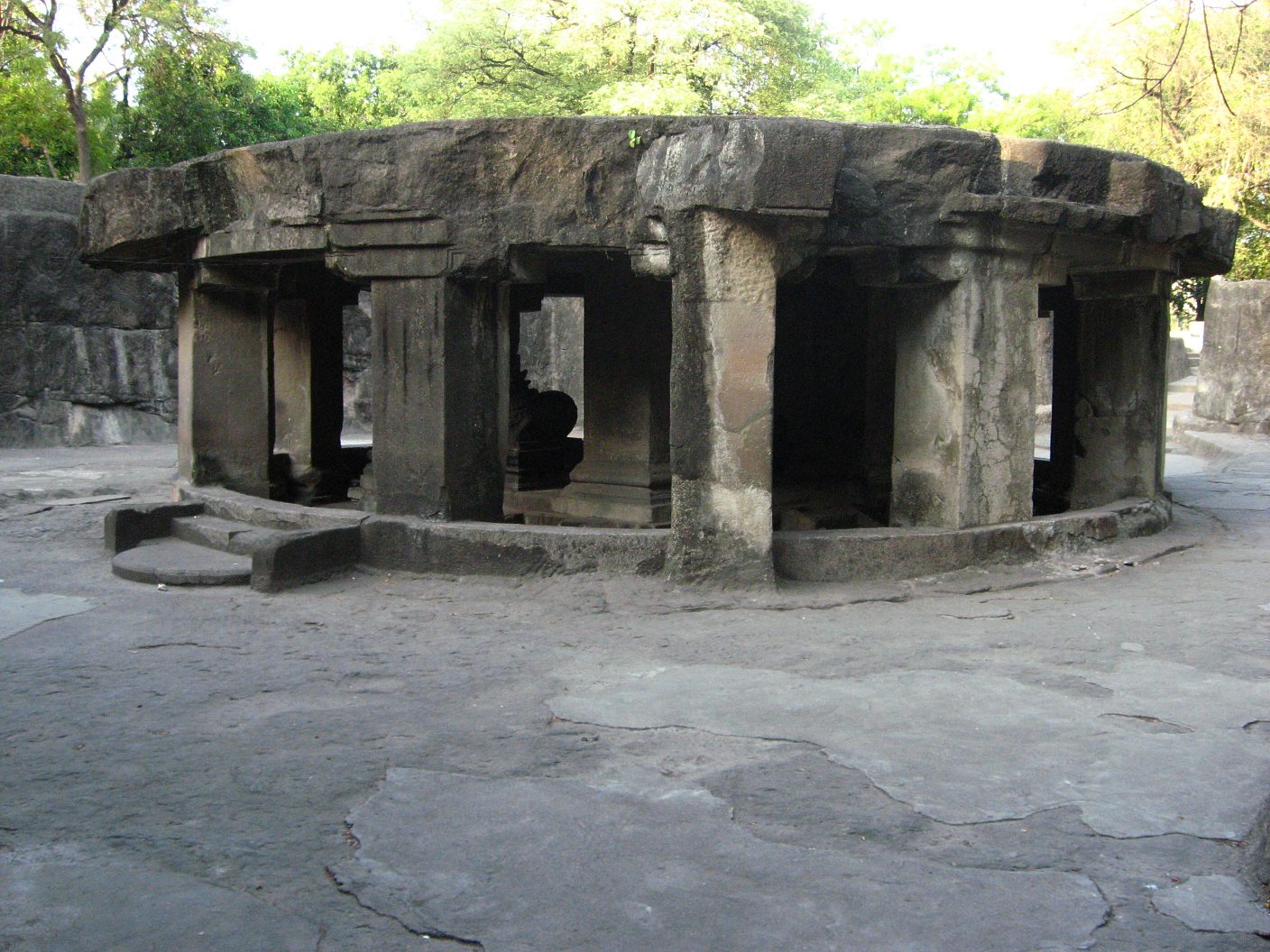|
Bombay East Indian Dialect
The East Indian language or East Indian dialect, also known as ''Mobai Marathi'' and East Indian Mahratti; is the form of Marathi-Konkani languages spoken in Bombay (Mumbai). It has a significant amount of Indo-Portuguese loanwords. It does not have a unique script of its own. Devanagari and the Roman script are used by its speakers, who are the native Christians of the Seven Islands of Bombay in the northern Konkan division. The dialect is losing popular usage due to immigration, depopulation & anglo-americanisation among the younger generation. However, it is still used to make songs and dramas, as well as in Christian worship since the Novus Ordo was approved in the 1960s. Differences from Poona (Pune) Marathi All pronouns have a change from ''yah'' to ''te''. Words in Marathi for yes, where, here, there, have different East Indian counterparts. Other grammatical nuances differ from standard-spoken Marathi. Historical references From the early days of the East India Co ... [...More Info...] [...Related Items...] OR: [Wikipedia] [Google] [Baidu] |
Bombay (Mumbai)
Mumbai ( ; ), also known as Bombay ( ; its official name until 1995), is the capital city of the Indian state of Maharashtra. Mumbai is the financial capital and the most populous city proper of India with an estimated population of 12.5 million (1.25 crore). Mumbai is the centre of the Mumbai Metropolitan Region, the seventh-most populous metropolitan area in the world with a population of over 23 million (2.3 crore). Mumbai lies on the Konkan coast on the west coast of India and has a deep natural harbour. In 2008, Mumbai was named an alpha world city. Mumbai has the highest number of billionaires out of any city in Asia. The seven islands that constitute Mumbai were earlier home to communities of Marathi language-speaking Koli people. For centuries, the seven islands of Bombay were under the control of successive indigenous rulers before being ceded to the Portuguese Empire, and subsequently to the East India Company in 1661, as part of the dowry ... [...More Info...] [...Related Items...] OR: [Wikipedia] [Google] [Baidu] |
Immigration
Immigration is the international movement of people to a destination country of which they are not usual residents or where they do not possess nationality in order to settle as Permanent residency, permanent residents. Commuting, Commuters, Tourism, tourists, and other short-term stays in a destination country do not fall under the definition of immigration or migration; Seasonal industry, seasonal labour immigration is sometimes included, however. Economically, research suggests that migration can be beneficial both to the receiving and sending countries. The academic literature provides mixed findings for the relationship between immigration and crime worldwide. Research shows that country of origin matters for speed and depth of immigrant assimilation, but that there is considerable assimilation overall for both first- and second-generation immigrants. Discrimination based on nationality is legal in most countries. Extensive evidence of discrimination against foreign-b ... [...More Info...] [...Related Items...] OR: [Wikipedia] [Google] [Baidu] |
Bombay Hindi
Bombay Hindi, also known as ''Bambaiya Hindi'' or ''Mumbaiya Hindi'', is the Hindustani language, Hindustani dialect spoken in Mumbai, in the Konkan region of India. Its vocabulary is largely from Hindi–Urdu, additionally, it has the predominant Stratum (linguistics)#Substratum, substratum of Marathi-Konkani, which is the official language and is also widely spoken in the Konkan division of Maharashtra. Bombay Hindi also has elements of Gujarati language, Gujarati. General While many such local dialects have evolved in cosmopolitan cities around the world, Bombay Hindi is widely known throughout India, as a result of its frequent use in Bollywood movies. Initially, this dialect was used to represent crooks and uncouth characters as, to quote film critic Shoma A. Chatterji, "Indian films have the unique quality of different characters speaking different varieties of Hindi according to their social status, their caste, communal identity, Education in India, education, professio ... [...More Info...] [...Related Items...] OR: [Wikipedia] [Google] [Baidu] |
Romi Konkani
Konkani in the Roman script, commonly known as Roman Konkani or ''Romi Konknni'' () refers to the writing of the Konkani language in the Roman script. While Konkani is written in five different scripts altogether, Roman Konkani is widely used. Roman Konkani is known to be the oldest preserved and protected literary tradition beginning from the 16th century AD. An estimated 500,000 people use Roman Konkani. The use of Devanagari script for Konkani, which is now its official script, first occurred in AD 1187.Mother Tongue blues nbsp;— Madhavi Sardesai Roman Konkani was not mandated as official script by law, for decades even after the Konkani language agitati ...
[...More Info...] [...Related Items...] OR: [Wikipedia] [Google] [Baidu] |
Konkani Language
Konkani, (Devanagari: , Konkani in the Roman script, Romi: , Kannada script, Kannada: , Koleluttu: , Nastaliq: ; IAST: , ) formerly Concani or Concanese, is an Indo-Aryan languages, Indo-Aryan language spoken by the Konkani people, primarily in the Konkan region, along the western coast of India. It is one of the 22 Scheduled languages of India, scheduled languages mentioned in the Indian Constitution, and the official language of the Indian state of Goa. It is also spoken in Karnataka, Maharashtra, Kerala, Gujarat as well as Damaon, Diu & Silvassa. Konkani is a member of the Indo-Aryan languages#Southern Zone, Southern Indo-Aryan language group. It retains elements of Vedic Sanskrit, Vedic structures and shows similarities with both Indo-Aryan languages#Western Zone, Western and Indo-Aryan languages#Eastern Zone, Eastern Indo-Aryan languages. The first Konkani inscription is dated 1187 AD. There are many Konkani dialects spoken along and beyond the Konkan region, from Damaon ... [...More Info...] [...Related Items...] OR: [Wikipedia] [Google] [Baidu] |
Marathi Language
Marathi (; , 𑘦𑘨𑘰𑘙𑘲, , ) is a Classical languages of India, classical Indo-Aryan languages, Indo-Aryan language predominantly spoken by Marathi people in the Indian state of Maharashtra and is also spoken in Goa, and parts of Gujarat, Karnataka and the territory of Dadra and Nagar Haveli and Daman and Diu. It is the official language of Maharashtra, and an additional official language in the state of Goa, where it is used for replies, when requests are received in Marathi. It is one of the 22 scheduled languages of India, with 83 million speakers as of 2011. Marathi ranks 13th in the List of languages by number of native speakers, list of languages with most native speakers in the world. Marathi has the List of languages by number of native speakers in India, third largest number of native ... [...More Info...] [...Related Items...] OR: [Wikipedia] [Google] [Baidu] |
Americanisation
Americanization or Americanisation (see spelling differences) is the influence of the American culture and economy on other countries outside the United States, including their media, cuisine, business practices, popular culture, technology and political techniques. Some observers have described Americanization as synonymous with progress and innovation. The cinema of the United States has dominated most of the world's medias markets since the 1910s, and is the chief medium by which the international community sees American fashions, customs, scenery, and way of life. The majority of the top 50 highest-grossing films of all time have been made either entirely or partially in the United States or were financed by U.S. production companies, even with limited or no artistic involvement. The top 50 constituents set and filmed entirely in the United Kingdom, like some of the ''Harry Potter'' franchise, or with deliberately and quintessentially British source material, like the ' ... [...More Info...] [...Related Items...] OR: [Wikipedia] [Google] [Baidu] |
Anglicisation
Anglicisation or anglicization is a form of cultural assimilation whereby something non-English becomes assimilated into or influenced by the culture of England. It can be sociocultural, in which a non-English place adopts the English language or culture; institutional, in which institutions are influenced by those of England or the United Kingdom; or Anglicisation (linguistics), linguistic, in which a non-English term or name is altered due to the cultural influence of the English language.Bridge, Carl, and Fedorowich, Kent. ''The British World: Diaspora, Culture, and Identity'', 2003, p. 89. "Beyond gaps in our information about who or what was affected by anglicisation is the matter of understanding the process more fully in terms of agency, periodisation, and extent and limitations." It can also refer to the influence of English soft power, which includes media, cuisine, popular culture, technology, business practices, laws and political systems. Anglicisation first occurre ... [...More Info...] [...Related Items...] OR: [Wikipedia] [Google] [Baidu] |
East India Company
The East India Company (EIC) was an English, and later British, joint-stock company that was founded in 1600 and dissolved in 1874. It was formed to Indian Ocean trade, trade in the Indian Ocean region, initially with the East Indies (South Asia and Southeast Asia), and later with East Asia. The company gained Company rule in India, control of large parts of the Indian subcontinent and British Hong Kong, Hong Kong. At its peak, the company was the largest corporation in the world by various measures and had its own armed forces in the form of the company's three presidency armies, totalling about 260,000 soldiers, twice the size of the British Army at certain times. Originally Chartered company, chartered as the "Governor and Company of Merchants of London Trading into the East-Indies," the company rose to account for half of the world's trade during the mid-1700s and early 1800s, particularly in basic commodities including cotton, silk, indigo dye, sugar, salt, spices, Potass ... [...More Info...] [...Related Items...] OR: [Wikipedia] [Google] [Baidu] |
The Times Of India
''The Times of India'' (''TOI'') is an Indian English-language daily newspaper and digital news media owned and managed by the Times Group. It is the List of newspapers in India by circulation, third-largest newspaper in India by circulation and List of newspapers by circulation, largest selling English-language daily in the world. It is the oldest English-language newspaper in India, and the second-oldest Indian newspaper still in circulation, with its first edition published in 1838. It is nicknamed as "The Old Lady of Bori Bunder", and is a newspaper of record. Near the beginning of the 20th century, Lord Curzon, the Viceroy of India, called ''TOI'' "the leading paper in Asia". In 1991, the BBC ranked ''TOI'' among the world's six best newspapers. It is owned and published by Bennett, Coleman & Co. Ltd. (BCCL), which is owned by the Sahu Jain family. In the Brand Trust Report India study 2019, ''TOI'' was rated as the most trusted English newspaper in India. In a 2021 surve ... [...More Info...] [...Related Items...] OR: [Wikipedia] [Google] [Baidu] |
Poona (Pune)
Pune ( ; , ISO: ), previously spelled in English as Poona ( the official name until 1978), is a city in the state of Maharashtra in the Deccan plateau in Western India. It is the administrative headquarters of the Pune district, and of Pune division. In terms of the total amount of land under its jurisdiction, Pune is the largest city in Maharashtra, with a geographical area of 516.18 sq km, though by population it comes in a distant second to Mumbai. According to the 2011 Census of India, Pune has 7.2 million residents in the metropolitan region, making it the seventh-most populous metropolitan area in India. The city of Pune is part of Pune Metropolitan Region. Pune is one of the largest IT hubs in India. It is also one of the most important automobile and manufacturing hubs of India. Pune is often referred to as the "Oxford of the East" because of its educational institutions. It has been ranked "the most liveable city in India" several times. Pune at different point ... [...More Info...] [...Related Items...] OR: [Wikipedia] [Google] [Baidu] |
Novus Ordo
The Mass of Paul VI, also known as the Ordinary Form or , is the most commonly used liturgy in the Catholic Church. It was promulgated by Pope Paul VI in 1969 and its liturgical books were published in 1970; those books were then revised in 1975, they were revised again by Pope John Paul II in 2000, and a third revision was published in 2002. It largely displaced the Tridentine Mass, the latest edition of which had been published in 1962 under the title ('The Roman Missal restored by decree of the Most Holy Council of Trent'). The editions of the Mass of Paul VI Roman Missal (1970, 1975, 2002) have as title ('The Roman Missal renewed by decree of the Most Holy Second Ecumenical Council of the Vatican'), followed in the case of the 2002 edition by ('promulgated by the authority of Pope Paul VI and revised at the direction of Pope John Paul II'). It is the most-used Mass within the Catholic Church today. Names In its official documents, the Catholic Church identifies the ... [...More Info...] [...Related Items...] OR: [Wikipedia] [Google] [Baidu] |









